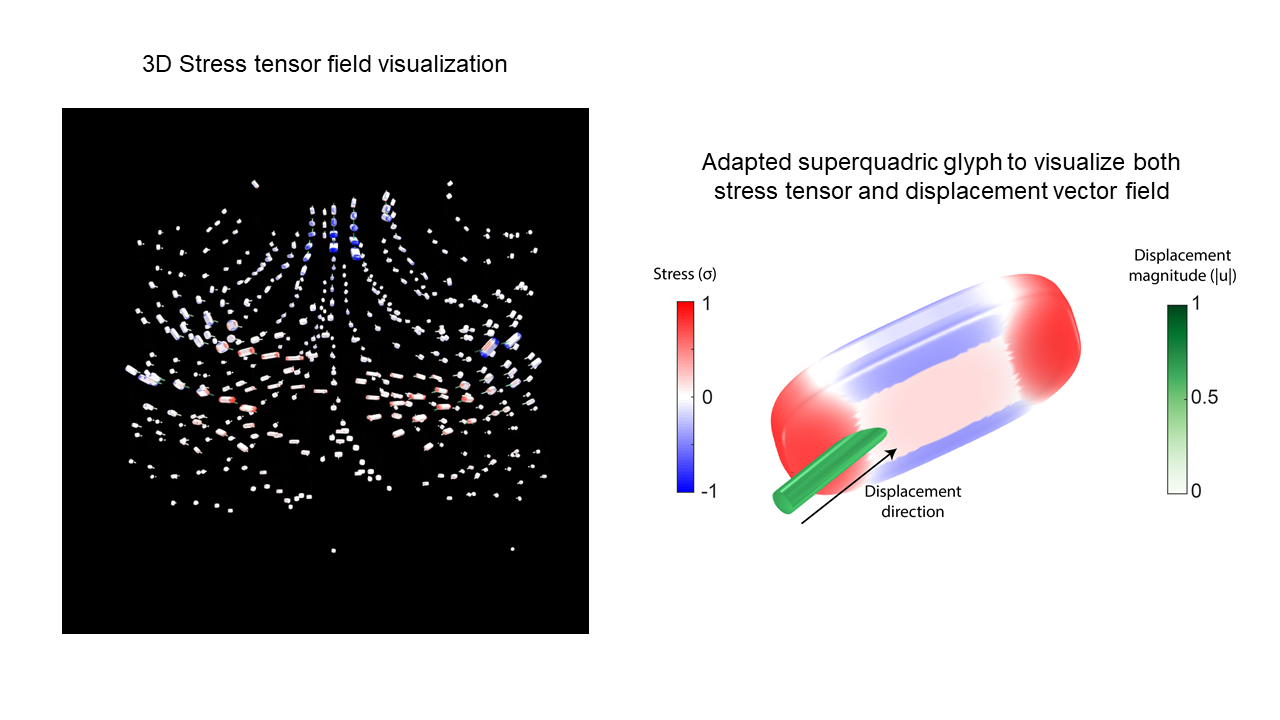Visualization of 3D Stress Tensor Fields Using Superquadric Glyphs on Displacement Streamlines
Mohak Patel, David Laidlaw
External link (DOI)
View presentation:2021-10-29T14:15:00ZGMT-0600Change your timezone on the schedule page
2021-10-29T14:15:00Z

Fast forward
Direct link to video on YouTube: https://youtu.be/tnHDF3v2fvQ
Keywords
ensors, Stress, Visualization, Three-dimensional displays, Data visualization, Clutter, Solids, 3D stress tensor field, visualization, glyph, glyph placement, virtual reality, user study
Abstract
Stress tensor fields play a central role in solid mechanics studies, but their visualization in 3D space remains challenging as the information-dense multi-variate tensor needs to be sampled in 3D space while avoiding clutter. Taking cues from current tensor visualizations, we adapted glyph-based visualization for stress tensors in 3D space. We also developed a testing framework and performed user studies to evaluate the various glyph-based tensor visualizations for objective accuracy measures, and subjective user feedback for each visualization method. To represent the stress tensor, we color encoded the original superquadric glyph, and in the user study, we compared it to superquadric glyphs developed for second-order symmetric tensors. We found that color encoding improved the user accuracy measures, while the users also rated our method the highest. We compared our method of placing stress tensor glyphs on displacement streamlines to the glyph placement on a 3D grid. In the visualization, we modified the glyph to show both the stress tensor and the displacement vector at each sample point. The participants preferred our method of glyph placement on displacement streamlines as it highlighted the underlying continuous structure in the tensor field.